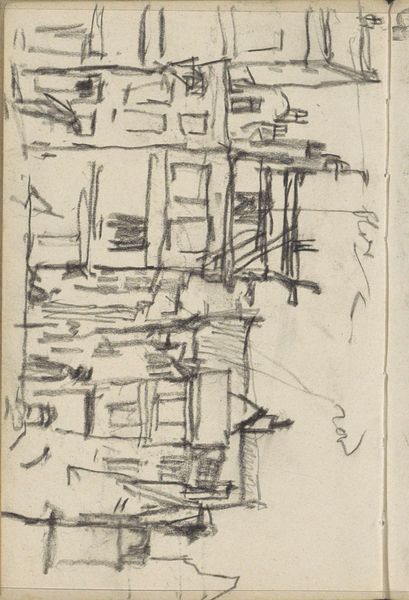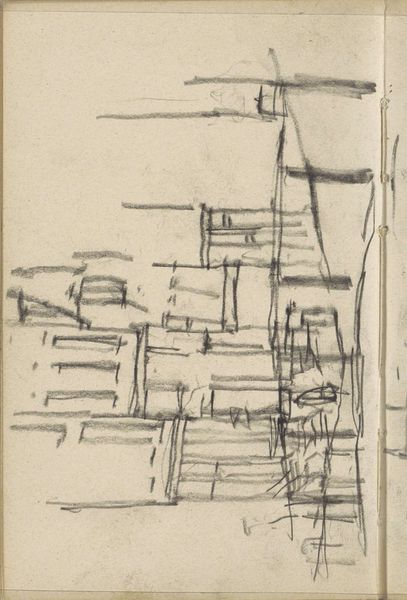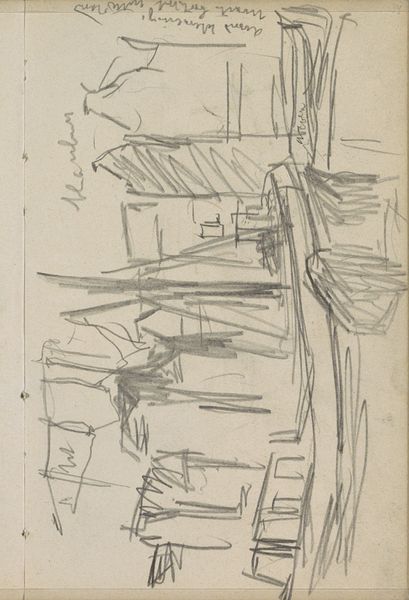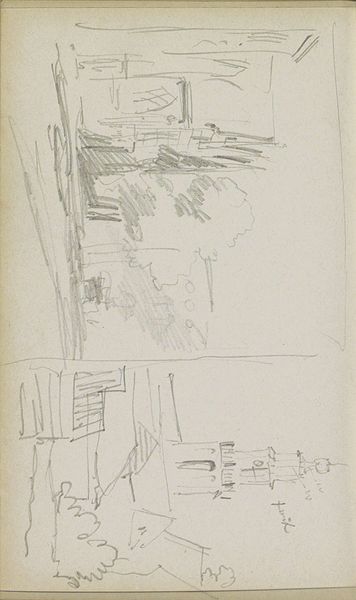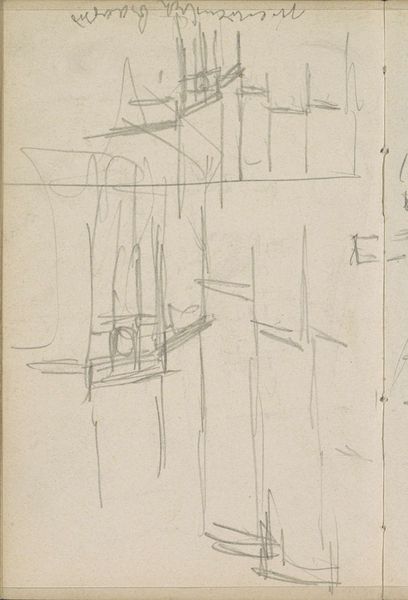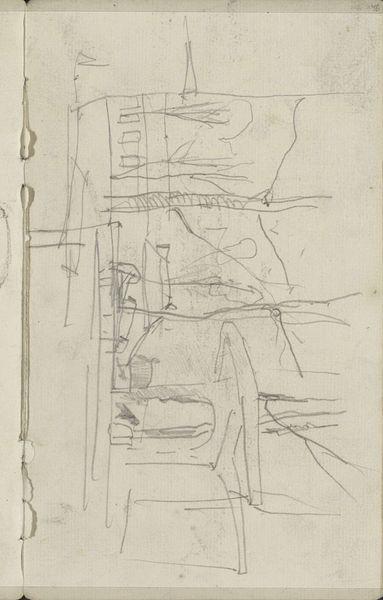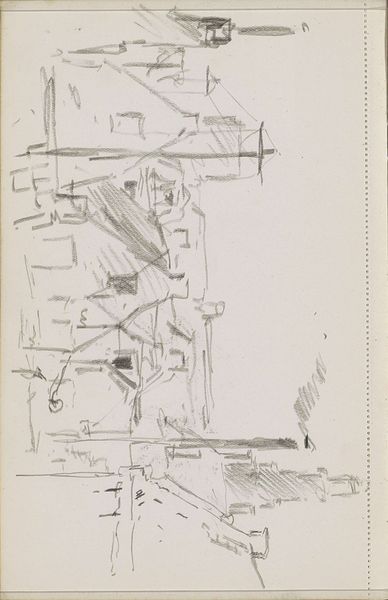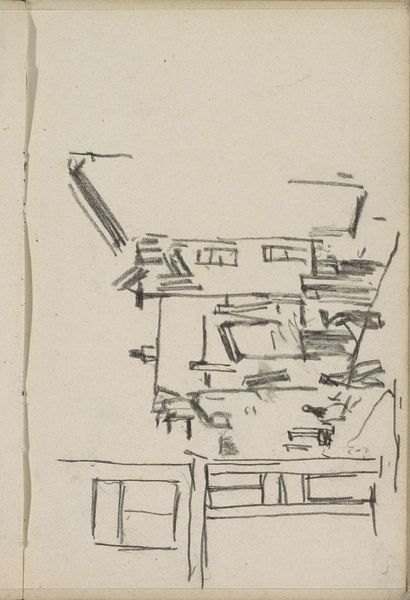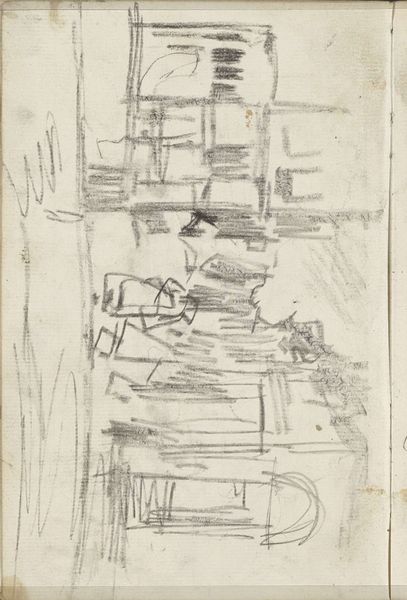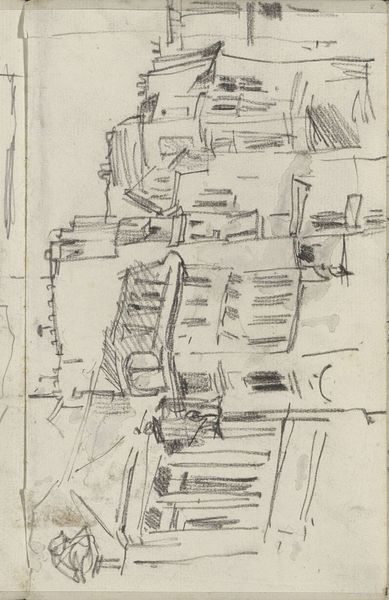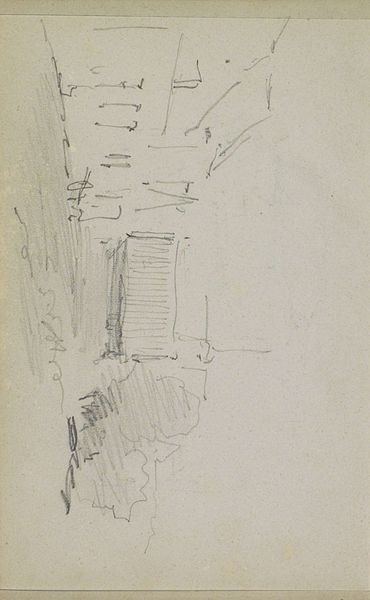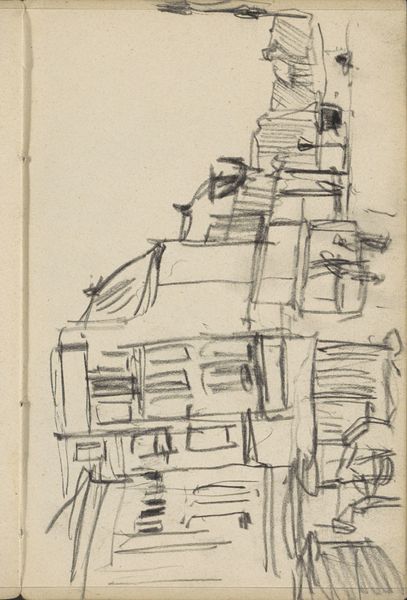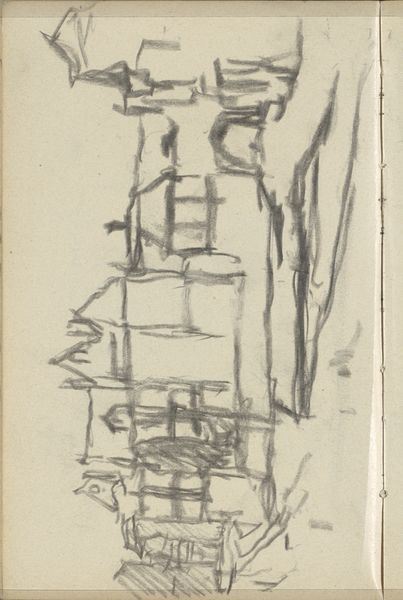
Copyright: Rijks Museum: Open Domain
Curator: This is George Hendrik Breitner's "Gezicht op de Baan in Rotterdam," a pencil drawing likely created sometime between 1900 and 1923, now residing at the Rijksmuseum. Editor: There's a fascinating rawness to this sketch. You can almost feel the artist quickly capturing a fleeting impression of the Rotterdam cityscape. It feels… unfinished, immediate. Curator: Precisely. Breitner was deeply invested in depicting the lived experience of the modern city, and the sketch medium perfectly conveys that sense of immediacy. These aren’t polished, idealized scenes. Instead, they feel like glimpses into everyday life, reflecting the rise of urbanism at the time. Editor: I'm interested in the pencil itself. The choice of graphite suggests both accessibility and speed. This isn't about precious materials; it's about the direct, physical act of recording the scene. The quick strokes, the varying pressure--it all speaks to the process. Curator: And that's precisely where its significance lies. Breitner was capturing Rotterdam’s energy. This street, "De Baan," would have been transforming, undergoing rapid industrialization. He wasn't interested in grand architecture, but the grit of progress, of a working city. Editor: You can almost hear the clatter and feel the vibration. The sketch certainly captures the visual language of a society under construction. This work emphasizes the materiality of urban spaces and the labor behind them. Curator: It offers a crucial counterpoint to idealized portrayals of urban life that dominated much of the 19th century, challenging prevailing aesthetic conventions. It also gave space and attention to typically unregarded urban subjects, revealing how street life had a profound social impact. Editor: Seeing how directly and rapidly the scene was captured allows a reflection on the labor itself – both the visible urban laborers on the street and Breitner’s effort. Curator: Looking at it through that lens changes the way we consider the power dynamics of viewing the piece itself. I’ve noticed, I hope not falsely, the lack of emphasis on certain urban infrastructures and architectural features. It’s so telling of how we see social dynamics changing, even when they feel immutable. Editor: It’s almost as if the work opens new avenues of considering material creation: Whose labor made this urbanity and this work possible? Curator: A pertinent thought. It definitely compels one to continue learning. Editor: A perfect point on which to conclude our dialogue here today.
Comments
No comments
Be the first to comment and join the conversation on the ultimate creative platform.
